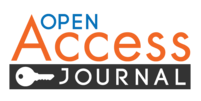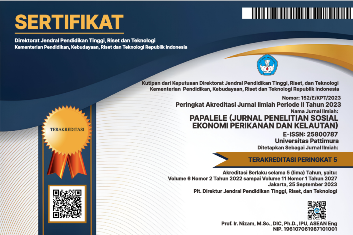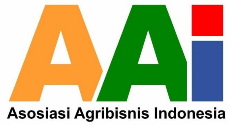PERSEPSI MASYARAKAT TERHADAP KERUSAKAN TERUMBU KARANG DI TELUK AMBON DALAM
Abstract
The coral reefs in Inner Ambon Bay are in the bad category or can even be said to be almost gone where the percentage of coral cover is very small. Efforts to deal with damage to coral reefs have been carried out through rehabilitation programs in Ambon Bay. One of the recommendations given through this program is the need for the participation of coastal communities near the coral transplantation site. It is expected that a good / positive community perception of the existence of coral reefs will encourage the community to participate in efforts to repair damaged coral reefs. For this reason, this research aims to assess public perceptions of damage to coral reefs in Inner Ambon Bay. The survey method was conducted on 318 samples of household heads for primary data collection using a Likert scale questionnaire. The data is analyzed qualitatively and quantitatively. The results showed that people's perception of coral reefs in Inner Ambon Bay was "know". This means that people have knowledge about coral reefs, the benefits of coral reefs, and damage to coral reefs. For this reason, local governments need to manage coral reefs at Inner Ambon Bay in collaboration with local communities, through the establishment of coral reef management institutions at the village level or to utilize coastal and marine management institutions or Kewang institutions in Poka Village, Hunuth Village, and Halong Village to conduct various coral reef rehabilitation program activities.
Downloads
References
Akdon dan Ridwan, 2013. Rumus dan Data dalam Aplikasi Statsitika. Albeta, Bandung.
Butar-Butar, H. 2003. Hubungan Faktor-Faktor Kharakteristik Masyarakat Dengan Perilaku Masyarakat Dalam Pengelolaan Ekosistem Terumbu Karang (Studi Kasus di Kecamatan Teluk Dalam Kabuaten Nias). Tesis pada Program Pascasarjana Universitas Sumatera Utara, Medan.
COREMAP (Coral Reef Rehabilitation and Management Program). 2001. Naskah Kebijakan Nasilnal Pengelolaan Terumbu Karang di Indonesia. PMO-COREMAP, Jakarta.
Ernovianthy A. dan I. G. W. M. Yasa. 2014. Pengaruh Kondisi Sosial Ekonomi Terhadap Partisipasi Masyarakat Dalam Tertib Administrasi Kependudukan (Studi Kasus Dua Kelurahan di Kota Denpasar). Jurnal Ekonomi Pembangunan Volume 3 No 1 Januari 2014.
Fahry, E. 2005.Partisipasi Masyarakat Dalam Pengelolaan Terumbu Buatan di kelurahan Pulau Panggang Kabupaten Administrasi Kepulauan Seribu. Tesis pada program PascasarjanaProgram Studi Magister Manajemen Agribisnis Institut Pertanian Bogor, Bogor.
Fauzi, A., 2001. Prinsip-Prinsip Penelitian Sosial Ekonomi Jurusan Sosial Ekonomi Perikanan dan Kelautan. Institut Pertanian Bogor, Bogor.
Fauzi, A., 2014. Valuasi Ekonomi dan Penilaian Kerusakan SDA dan Lingkungan. IPB Press, Bogor.
Hiariey, L. S., 2013. Peran Serta Masyarakat Pemanfaat Pesisir Dalam Pengelolaan Wilayah Pesisir Teluk Ambon dalam. Jurnal Matematika, Sains, dan Teknologi 14 (1), pp 48-61.
Indrabudi, T., dan R. Alik, 2017. Status Kondisi Terumbu Karang du Teluk Ambon. Widyariset 3 (1), pp 81-94.
NND D. A dan T. D. Hapsari. 2012. Analisis Persepsi dan Partisipasi Masyarakat Pesisir Pada Pengelolaan KKLD Ujungnegoro Kabupaten Batang. Jurnal SEPA Volume 9 Nomor 1 September 2012, ISSN1829-9946.
Pelasula, D. D., 2017. Degradasi Terumbu Karang Teluk Ambon dan Upaya Rehabilitasi. Pusat Penelitian Laut dalam LIPI, Ambon.
[PPM] Pemerintah Provinsi Maluku, 2014. Peraturan Daerah Provinsi Maluku Nomor 10 Tahun 2014 Tentang Pengelolaan Ekosistem Terumbu Karang. Lembaran Daerah Provinsi Maluku Tahun 2014 Nomor 10, Ambon.
Salampessy, M., B. Nugroho, H. Purnomo. 2012. Hubungan Karakteristik Responden Dengan Partisipasi Masyarakat Dalam Kegiatan Pengelolaan Hutan Lindung Gunung Nona di Kota Ambon Provinsi Maluku. Jurnal Penelitian Sosial dan Ekonomi 9(3), pp 149-159.
Sugiyono, 2010. Metode Penelitian Kuantitatif Kualitatif R dan D. Alfabeta, Bandung.
Sugiyono, 2015. Statistika Nonparametris Untuk Penelitian. Alfabeta, Bandung.
Copyright (c) 2019 Eygner Gerald Talakua

This work is licensed under a Creative Commons Attribution-NonCommercial 4.0 International License.











